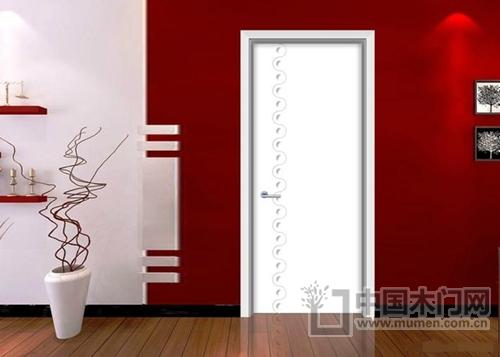Today, we're taking a closer look at wood-plastic doors—exploring their advantages and disadvantages to help you make an informed choice. If you're interested in eco-friendly and durable door options, keep reading!

Wood-plastic doors are made by mixing fine wood powder with polymer resin and then molding the mixture under high pressure. This innovative material combines the best qualities of both wood and plastic, offering a product that mimics real wood in appearance and performance. Unlike traditional wood products, wood-plastic doors do not use adhesives or harmful chemicals like formaldehyde, benzene, or ammonia during production, making them a safer and greener alternative.
The main ingredients in wood-plastic doors include PVC resin and high-quality wood powder. The PVC used is medical-grade and comes from reputable domestic brands, while the wood powder is sourced from professional wood companies. After undergoing processes such as classification, grinding, drying, and coating, the materials ensure the final product meets high-quality standards.
To enhance the properties of the material, various additives such as stabilizers, foaming agents, and modifiers are included in the formula. These components are mixed in precise proportions, ensuring the stability and quality of the foamed sheets produced.
The manufacturing process involves advanced mixing and extrusion systems, which operate with a high degree of automation. The mixing equipment ensures accurate dosing, uniform blending, and efficient processing, which helps maintain product consistency. For extrusion, high-torque twin-screw machines are used to handle the unique characteristics of the wood-plastic composite, preventing issues like wood powder carbonization.
The design of wood-plastic doors also allows for thermal transfer printing, enabling a wide range of realistic wood grain patterns and colors. This makes the doors suitable for modern interior styles and consumer preferences.
**Advantages of Wood-Plastic Doors**
1. **Environmentally Friendly**: Made under high temperature, high pressure, and vacuum conditions, wood-plastic doors do not contain formaldehyde. They use thermal transfer technology instead of paint, eliminating toxic emissions and making them safe for home use.
2. **Waterproof and Durable**: These doors are resistant to moisture, corrosion, mold, and pests. Their dual nature of wood and plastic makes them ideal for humid areas like bathrooms and storage rooms.
3. **Strong Structure**: The cavity structure and optimized formula design ensure high strength and durability, making them suitable for a variety of environments.
4. **Easy Installation**: The quick-install design allows for simple assembly without nails or glue, saving time and effort during installation.
5. **Good Insulation**: With a fine cell structure, these doors offer excellent thermal and sound insulation properties, improving energy efficiency and comfort.
6. **Fire Retardant**: Wood-plastic doors do not support combustion and will self-extinguish when exposed to fire, making them a safer option for interior spaces.
**Disadvantages of Wood-Plastic Doors**
1. **Lack of Natural Texture**: While thermal transfer or film techniques can mimic wood grain, they don’t offer the same natural feel as real wood. Additionally, they may soften at high temperatures.
2. **Limited Design Flexibility**: Since it's a relatively new material, there isn't a standardized quality system in place. The designs are often simpler compared to traditional wooden doors, which can have intricate carvings and details.
3. **Size Limitations**: Although not a standard door, the size of the profile is still somewhat restricted, which may limit customization options.
4. **Disposal Challenges**: Once discarded, wood-plastic doors are difficult to recycle or dispose of safely due to their plastic content. Burning them can release toxic fumes, so proper disposal is important.
In summary, wood-plastic doors offer a sustainable, durable, and low-maintenance alternative to traditional wooden doors. While they have some limitations, their environmental benefits and functional advantages make them a smart choice for many homeowners. Whether you're looking for an eco-friendly solution or a practical upgrade, wood-plastic doors are definitely worth considering.
L-Proline
Mianyang Shengshi Health Technology Co.,Ltd , https://www.shengshiaminoacid.com
